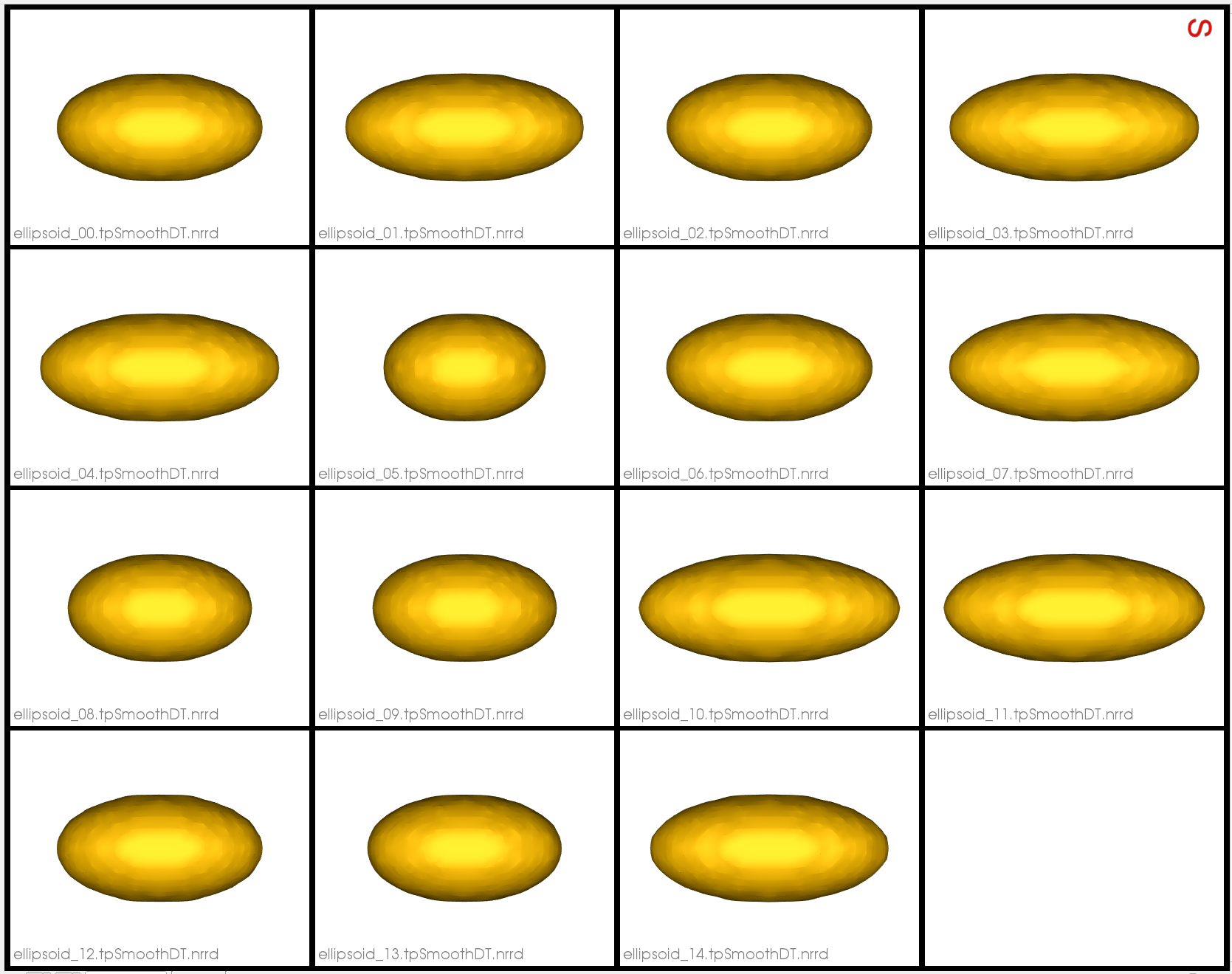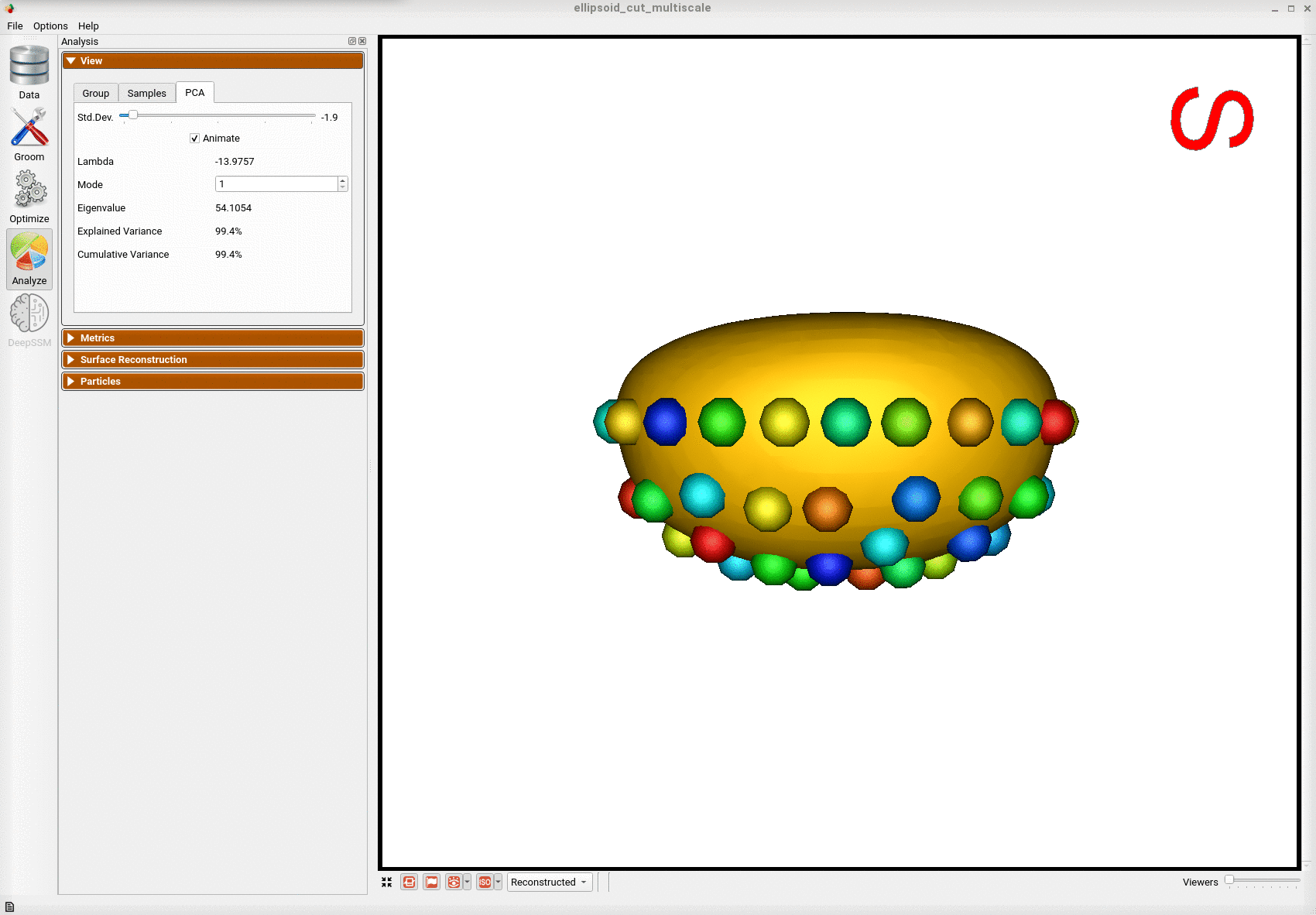Ellipsoid: Cutting Planes
What is the Use Case?
The ellipsoid_cut example demonstrates using multiple cutting planes to constrain the distribution of particles on ellipsoids which are already aligned. This can be used in modeling scenarios where statistical modeling/analysis is needed for a region-of-interest on the anatomy/object-class at hand without having to affect the input data.
Here is an example of where the cutting planes intersect and ellipsoid:
Grooming Steps
This use case starts with pre-aligned segmentations. The only grooming step is computing the signed distance transform for each segmentation.

Relevant Arguments
--use_subsample --num_subsample --use_single_scale --mesh_mode --tiny_test
Optimization Parameters
The python code for the use case calls the optimize command of ShapeWorks which reads the project sheet with the shape filenames and optimization parameter values. See Project excel file for details regarding creating the project sheet.
Below are the default optimization parameters for this use case.
{
"number_of_particles": 32,
"use_normals": 1,
"normals_strength": 15,
"checkpointing_interval": 200,
"keep_checkpoints": 0,
"iterations_per_split": 3000,
"optimization_iterations": 3000,
"starting_regularization": 100,
"ending_regularization": 10,
"recompute_regularization_interval": 2,
"domains_per_shape": 1,
"relative_weighting": 15,
"initial_relative_weighting": 0.05,
"verbosity": 0,
}
Here cutting_plane_counts is two for every ellipsoid and there are 15 ellipsoids so it is a list of twos of length 15.
The cutting_planes parameter is a list of the two cutting plane points of length 15.
Analyzing Shape Models
Below we can see the resulting shape model where correspondence points do not lie beyond the cutting planes and only a secton of the ellipsoids are modeled.
